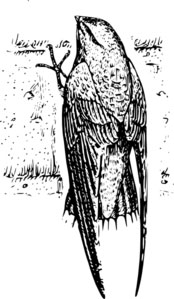One of the reasons behind recommending the installation of a chimney cap is to prevent the habitation of chimney swifts in your flue. Unlike other birds, chimney swifts are protected by the Migratory Bird Treaty. Homeowners are unable to remove the birds or nests until they have permanently left the chimney.

These birds are naturally attracted to chimneys for shelter, hence the name. Unlike many species of birds, they are unable to hold a “perched” position. However, their claws and tail bristles do enable them to “cling” to vertical surfaces.
During the spring, chimney swifts will begin nesting. The process lasts for several months until the eggs are hatched. The hatching generally occurs about three weeks after the eggs are laid. For the next month or so, the birds will be nursed to health until the family is ready to abandon the nest and migrate to Peru for the winter. In most cases, the birds will have left their “home” by the end of August.
The migratory pattern of the chimney sweep falls perfectly into the cycle of when to schedule an annual chimney inspection and cleaning. Since fireplaces will go unused by most homeowners in the spring and fall, there is no real danger in allowing the birds to live in the chimney if they are able to gain access. However, once they are gone, you should not only schedule the inspection and cleaning, but also an installation of a chimney cap to prevent them from returning the following season.
In addition to preventing the birds from returning, the chimney cap will also prevent water and debris from entering the chimney. It will also prohibit the escape of burning embers that may travel back up the flue, a leading cause of fires outside the home. For more information on chimney sweeps, you can visit www.chimneyswifts.org.
